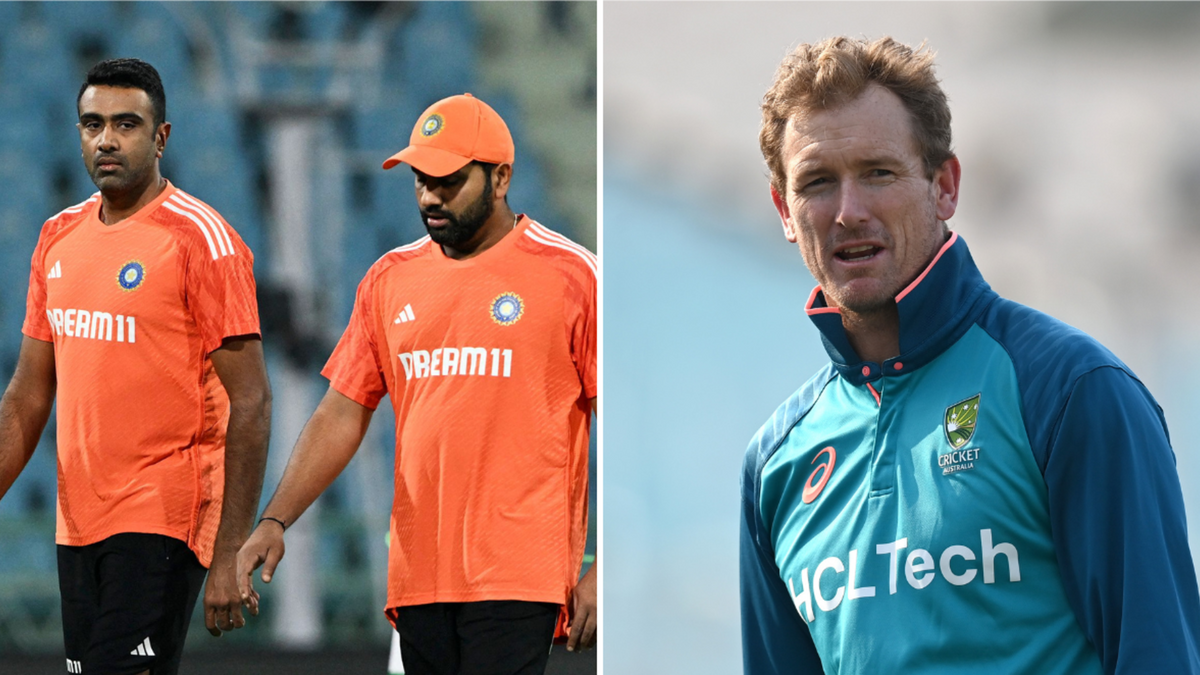
R Ashwin has revealed a conversation he had with Australia chief selector George Bailey during the World Cup final about the pitch in Ahmedabad left him “flabbergasted” at how well Bailey had read the surface.
Subscribe to the Wisden Cricket YouTube channel for post-match analysis, player interviews, and much more.
Speaking on his YouTube channel, Ashwin reflected on India’s seven-wicket defeat to Australia in the crunch clash. Pat Cummins won the toss and elected to bowl first, a decision which caused surprise in some quarters. Nevertheless, Australia went on to bowl India out for 240 before chasing the runs down with seven overs to spare thanks to a stunning century from Travis Head.
“As Australia’s history goes by, they say ‘we are going to have a bat, mate’ after winning the toss in big finals,” said Ashwin. “I was praying to the lords that Australia would do that because many people do not understand that the soil in Ahmedabad was like Orissa’s. As in, it played like how any soil taken from the Eastern part of the country would play. If every pitch gets bounce to the knee this would only get bounce up to the shin. So the bounce will be less but the soil won’t disintegrate because the clay does not release the moisture but holds. If every pitch gets bounce to the knee this would only get bounce up to the shin. So the bounce will be less but the soil won’t disintegrate because the clay does not release the moisture but holds.”
Following his surprise at Cummins’ decision at the toss, Ashwin detailed a revealing conversation with Bailey which explained the call.
“I was checking out if the pitch was disintegrating at the mid innings and I met George Bailey, the chairman of selectors,” said Ashwin. “And I asked: ‘Why didn’t you guys bat first like you always do after winning the toss?’ For that, he answered back: ‘We have played IPL and bilateral series for a long time now, and in our experience the red soil disintegrates but the black soil gets better to bat on under lights. In the match against South Africa at Lucknow, it was a red soil pitch that didn’t just seam, but turned too as time went by. Dew is not a big impact in red soil pitches whereas black soil pitches are good turners in the afternoon but in the night the pitch solidifies into a flat track and plays as though it’s made of concrete.’
“I was flabbergasted listening to that. See, what is happening is all the experience from IPL and the bilateral series and India becoming a central hub of world cricket, they can read the pitch perfectly. Journalists from other countries comment that the pitches have been changed and so on but it is purely laughable. India is a unique country. Different parts of the country have different soils – black soil, lesser black, a mix of black, clay and red mix, pure red, red with a mix of sand and so many more. Ahmedabad in itself has more than 3-4 varieties of soil in the square. So what George Bailey said regarding the pitch left me spellbound.”
Australia played India in a bilateral series ahead of the World Cup, which they lost 2-1. In the second ODI of that series, Australia won the toss and elected to bowl at Indore, losing the match by 99 runs on DLS. In the final match of the series, Australia once again won the toss but elected to bat in Rajkot. They won that match by 66 runs.
There had already been some controversy over the surfaces used in the World Cup during the knockout stages. Ahead of India’s semi-final against New Zealand, the pitch slated to be used for the fixture was changed to a more recently used surface the day before the match. India went on to beat New Zealand by 70 runs to reach the final.








